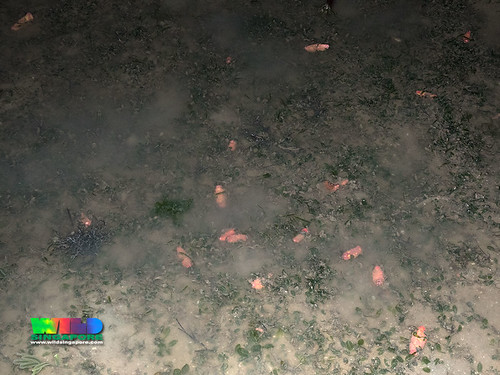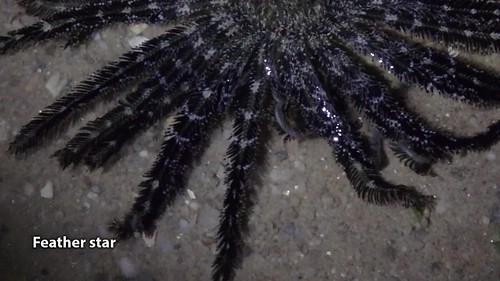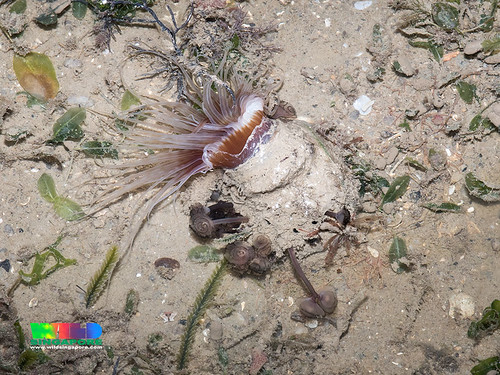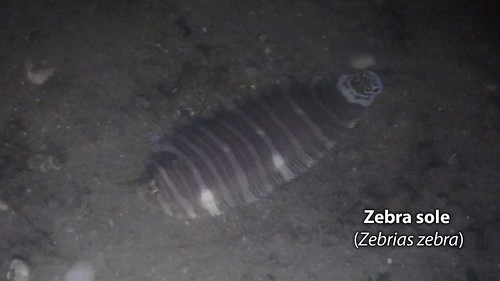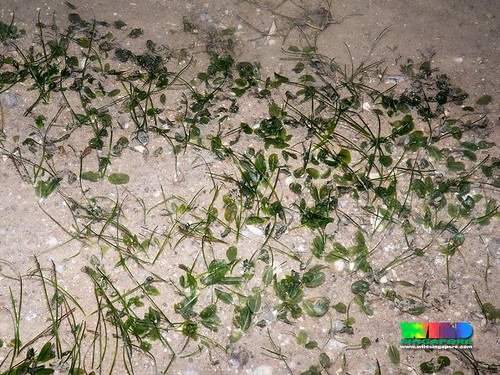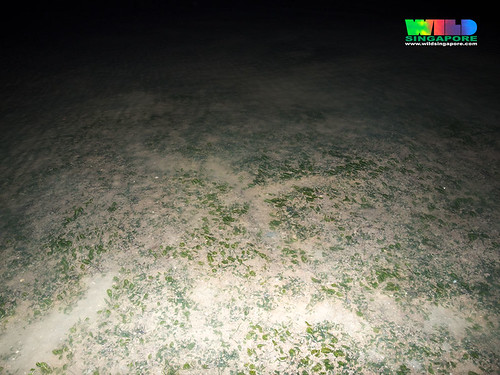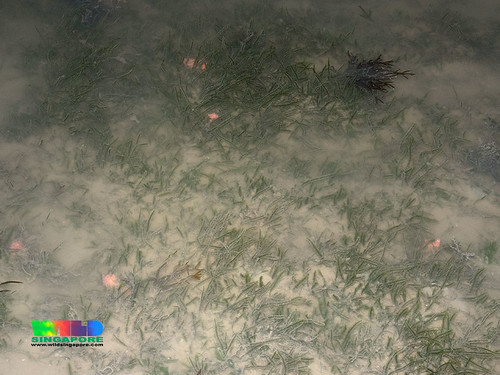We had planned to survey it in May 2017, but were shocked that an excavator was digging up the shore. It was relief to see today that the shores were still alive, although not as lively and rich as before.
This shore remains dominated by echinoderms. The most abundant is probably the Pink warty sea cucumbers. As well as Thorny sea cucumbers.
There were still many buried Ball sea cucumbers, some Orange sea cucumbers. Jonathan saw a Purple sea cucumber and Sea apple sea cucumber.
There were a few Eight-armed sea stars. Some were large, one was tiny.
These are predators and can move rapidly.
There were many tiny to small Biscuit sea stars. I saw one small orange Cake sea star and one Painted sand star.
The most surprising thing for me today was to see many feather stars dotting the seagrass meadows. I saw about 20. Mostly Blue feather stars but also two Black-and-white feather stars, one of them with a commensal brittle star in it (which I only saw when processing the photo).
Feather stars can move using their many arms.
There were many Sea Pencils, a few small Flowery sea pens, Spiky sea pens and Slender sea pens.
I saw a few tiny Ball flowery soft corals. I couldn't see any brittle stars in them.
As usual, the Common cerianthids were riddled with Black phoronid worms. There were also many tiny cerianthids.
I saw two small Haddon's carpet anemones, a few Tiger anemones and some Striped sand anemones.
I also saw one tiny Cerberilla nudibranch. But I didn't see any moon snails or other large snails or large clams. I also didn't see any octopuses.
The most interesting find for me today was a Zebra sole. It has a cute way of 'crawling' over the sandy bottom with the fins along its body margins. It looks more like a wide centipede than a fish. When it is alarmed, it spreads out its tail to reveal the colourful patterns.
There were also many other small flatfishes. I saw one White sea urchin.
The meadows were mostly Spoon seagrasses (large leaf blades). I also saw some Needle seagrass (narrow leaf blades)
And some sprinkles of Fern seagrass. Kok Sheng spotted a patch of Smooth ribbon seagrass during our Jun 2016 survey. But I didn't see any today.
It was nice to see some signs of dugong feeding trails in deeper water. We also saw these signs here on our last survey in Jun 2016.
But in some parts, there was no seagrass. Instead, growths of Scalpel green seaweeds. The shore was also firmer and sandier.
I checked out the rocky part of this shore and the rocks were bare of life.
We had noticed a sharp decline in richness during our survey in Aug 2015, compared to the survey in May 2015, when I already noticed a decline compared to our last visit here in May 2014 and Jun 2013. The decline seemed to have stopped in Jun 2016, although the shore was not as rich as it used to be.
Today, I sense that there has been a further decline in the richness of this shore. Not surprising since it had to cope with an oil spill as well as excavations. More about these here.
Photos by others on this trip
- Jonathan Tan on facebook, including what he saw on 20 Aug on the same shore.
Other on this trip: Toh Chay Hoon.


